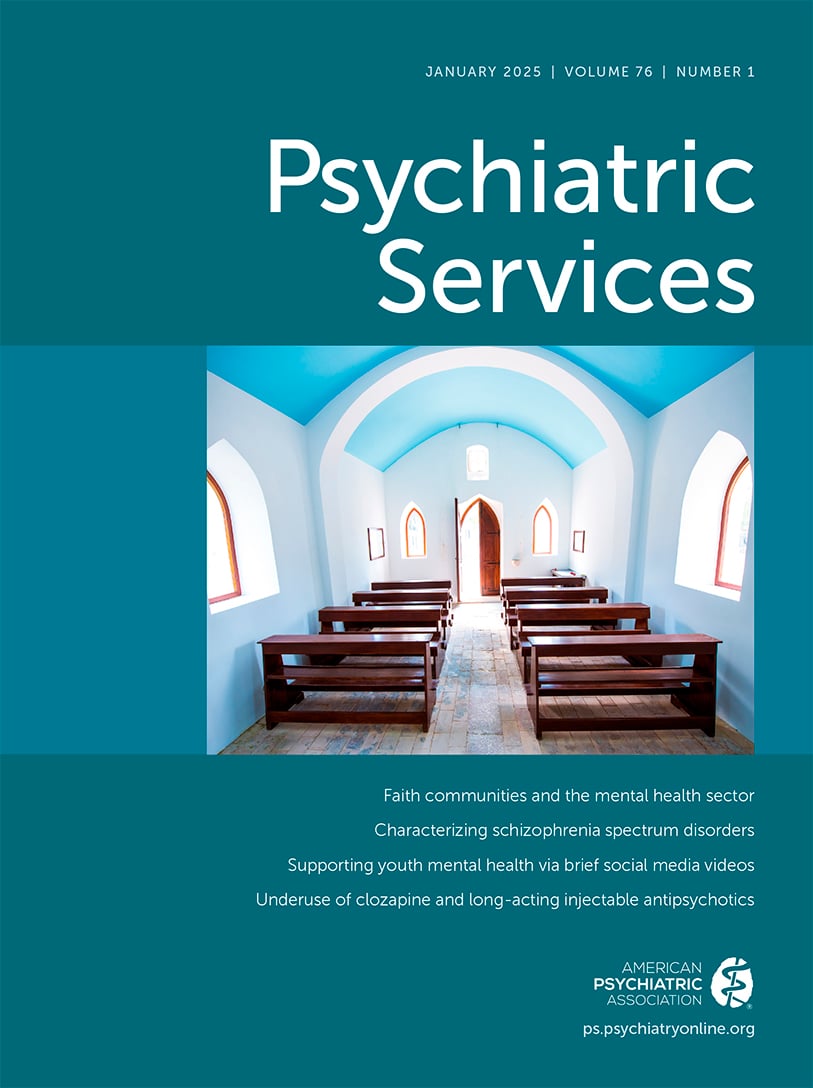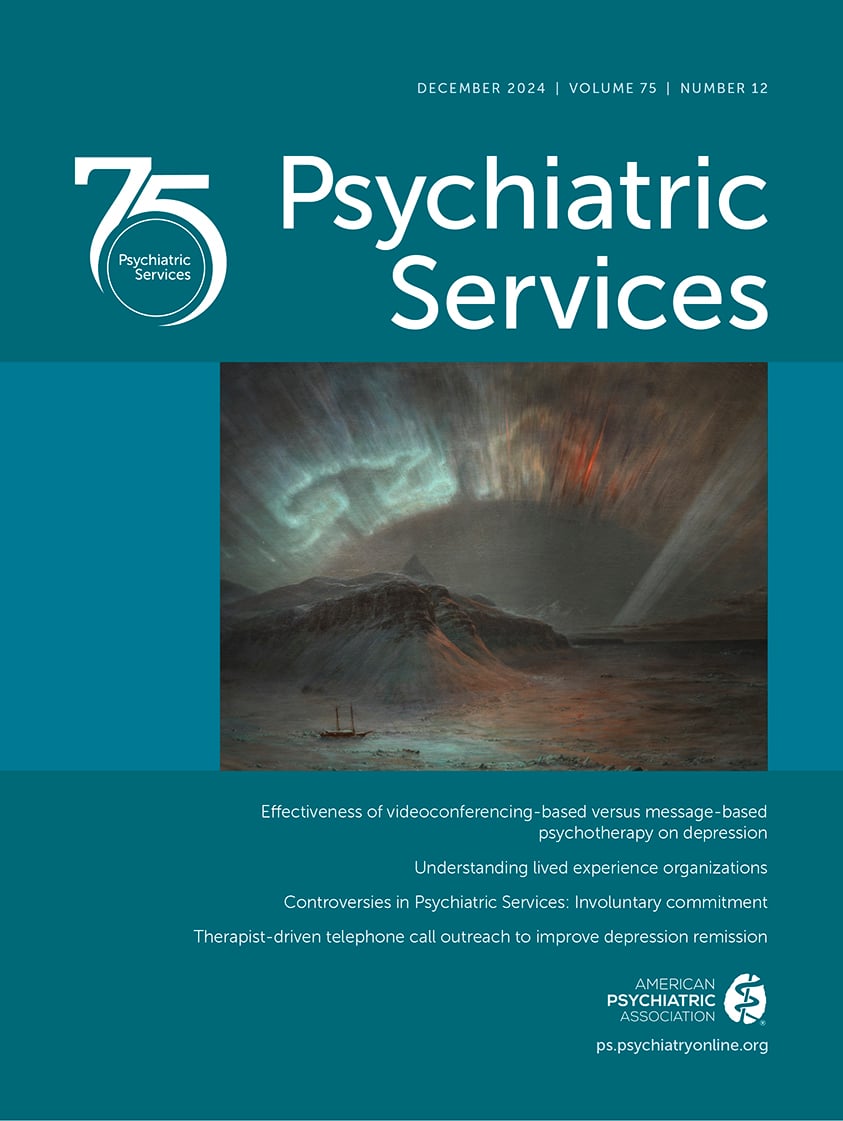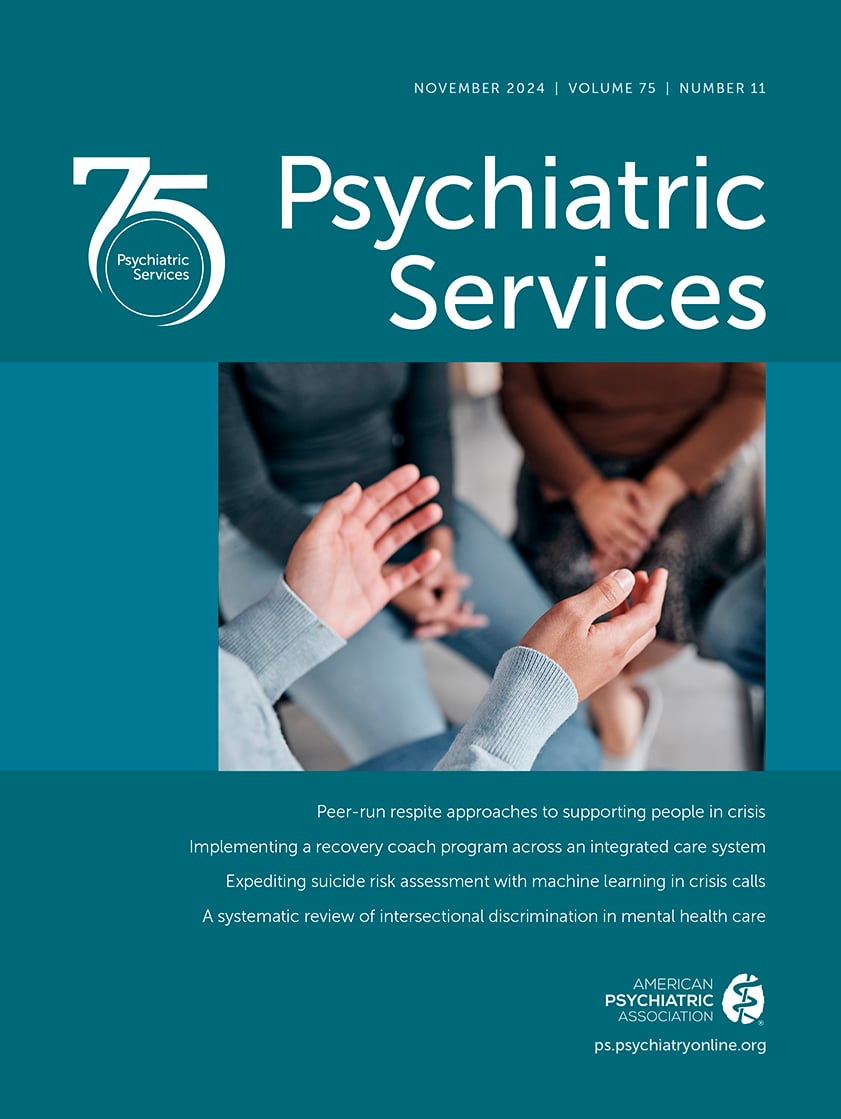Psychiatric Services
- Volume 35
- Number 11
- November 1984
Article
Publication date: 01 November 1984
Pages1087–1164Dr. Eth's Introduction: The subject of the ethical regulation of research involving human patients has been intensely controversial. The dual moral imperatives of protection of subjects and clinical progress, which seem so closely allied, often result in ...
https://doi.org/10.1176/ps.35.11.1087Publication date: 01 November 1984
Pages1091–1093This month's guest expert is Dr. Paul Teusink, who is assistant professor of psychiatry at the Cornell University Medical College and unit chief in the geriatric service at the Westchester Division of New York Hospital-Cornell Medical Center in White ...
https://doi.org/10.1176/ps.35.11.1091Publication date: 01 November 1984
Pages1097–1098This collaborative study suggests the following guidelines for practice: Lithium is the treatment of choice for the long-term preventive treatment of bipolar disorder. The use of imipramine for this group of patients is not recommended because of the high ...
https://doi.org/10.1176/ps.35.11.1097Publication date: 01 November 1984
Pages1107–1114During the last 15 years, there have been apparently contradictory criticisms of staffing patterns, and hence of care provided, in community mental health centers (CMHCs). To test their bypotbesis that heterogeneity among CMHCs is responsible for the ...
https://doi.org/10.1176/ps.35.11.1107Publication date: 01 November 1984
Pages1114–1117Although the number of full-time psychiatrists working in community mental health centers has generally declined, success in retaining psychiatrists varies throughout the country. According to one study, centers that were the most successful in retaining ...
https://doi.org/10.1176/ps.35.11.1114Publication date: 01 November 1984
Pages1118–1125Many community mental health centers have bad to operate with less funding in the past several years, especially since the advent of block grant funding. Evidence is now accumulating that some centers have bad to decrease their overall level of services ...
https://doi.org/10.1176/ps.35.11.1118Publication date: 01 November 1984
Pages1125–1129Federal block grants to states implemented under the Reagan administration were designed to shift governmental responsibility to state and local levels. Focusing on the impact of block grants on community mental health centers, the authors consider ...
https://doi.org/10.1176/ps.35.11.1125Publication date: 01 November 1984
Pages1129–1132Traditional forms of data-gathering have tended to underrepresent the care that community mental health centers provide to the more chronic, or seriously ill, patients. Using an alternative data-gathering method based on accumulated direct patient ...
https://doi.org/10.1176/ps.35.11.1129Publication date: 01 November 1984
Pages1133–1140The author examines geographic patterns of funding for community mental health centers (CMHCs) between 1965 and 1980. Using data from the National Institute of Mental Health, be discusses the evolution of CMHC funding patterns and correlates state per ...
https://doi.org/10.1176/ps.35.11.1133Publication date: 01 November 1984
Pages1151–1152The high prevalence of previously undetected, important physical disease in mentally disordered patients argues strongly for medical screening of this population. A mobile screening program can bring this service to mental health programs where screening ...
https://doi.org/10.1176/ps.35.11.1151Past Issues
View Issues Archive
Vol. 76 | No. 1

Vol. 75 | No. 12

Vol. 75 | No. 11
